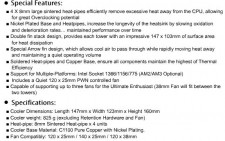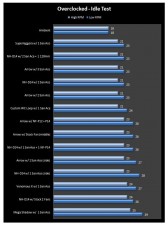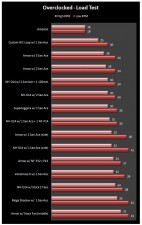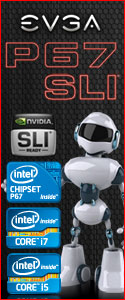We all remember the good old days; arguing who has the best cooler – you either were a TRUE or IFX-14 lover!  This reviewer however was a TRUE fan; simply down to how easy the heatsink was to fit on the board, as compared to the huge IFX-14. However; both did have with their own issues. The IFX-14′s downfall was largely due to a poor base. Today we see an eagerly awaited upgrade of the IFX-14 in the form of the ‘Arrow’, but not from Thermalright – instead, a sister company called Cogage.
About Cogage
Thermalright Inc. saw an issue with their high-end cooler – cost!  To remedy this, they created a daughter company called Cogage. Aimed at the more mainstream market, it was founded in order to make higher-end product more readily available due to its lower prices.
Specifications
The specifications from Cogage’s website:
Packaging and Contents
The Cogage Arrow is packaged in a very striking, sleek cardboard box which displays an image of product, specifications and some information about its features.
Out of the box, Cogage supplies a healthy dose of fan clips, which is a postive aspect, especially when coupled with the knowledge that most companies supply clips for a single fan and make you buy the rest if the product requires more fans. There are two 120x25mm and one 120x38mm clip sets, they also support 140mm fans. Cogage also supply Thermalright’s old Chill Factor (revision one) thermal compound, a glossy case sticker and six vibration strips to dampen the fans on the cooler.
The supplied Intel mounting kit supports all recent LGA775/1156/1366 platforms. The kit itself is rather basic as compared to the Venomous X, perhaps even cutting costs. Unlike Thermalright’s Venomous X, the Cogage Arrow does not include the pressure mounting mechanism. Thermalright informed  Overclockers Tech that they did test this cooler using such a system, and results showed little to no increase in performance!  Cogage, like many manufactures, don’t supply an AM2/AM3 mounting kit out of the box. However this mounting (optional) kit used by the Venomous X also works for the Cogage Arrow!
See here (scroll down to see the AM3 kit).
Four huge heatpipes jump out straight away which does look impressive.  These copper heatpipes have been nickel plated and soldered to a copper (nickel alloy) base.
At a first glance the cooler looks very much like an IFX-14 and nothing of importance has changed. The few changes that are noted are the fins and the plates have been changed to a design much like the Venomous X. Their are now one hundred and ten plates on the cooler I.E fifty five for each section. The thickness has also increased from 0.25 to 0.35mm and the distance between the fins increased from 1.5 to 1.8mm.
 The base, like the IFX-14 is convex. We didn’t have a razor blade handy, nor an accurate camera picture, but the base please looks to be a lot better than that of the IFX-14.
The base, like the IFX-14 is convex. We didn’t have a razor blade handy, nor an accurate camera picture, but the base please looks to be a lot better than that of the IFX-14.
Unlike Thermalright, Cogage supply a 120x25mm fan. There are no specifications on the sound levels, nor CFM detailed, however it does state that it is a 1000 to 1800RPM model PWM fan. At 1000 to 1400RPM it is fairly quiet and still pushes quite a bit of air for the noise level it produces.
We took some pictures to compare the size and attributes of both Noctua NH-D14 (left), and Cogage Arrow (right). Both are a similar height and do look very capable of serious cooling.
Who wins? – Keep on reading.
TESTING
ÂÂ
Test Method
We strapped on a single 120mmx38mm San Ace 9G1212H1011 fan, widely considered one of the best fans on the market due to its under-volting ability (lower RPM) and high static pressure (perfect for heatsinks).
The problem we had with the NH-D14 was that Noctua supplies two fans with the cooler, both 25mm thick. The Noctua cooler can’t accommodate 120x38mm fans in the middle, so with regard to the three-fan test, we used a high performance & static pressure Scythe S-FLEX SFF21F 1600RPM fan in the middle of the D14 with two San Ace 9G1212H1011 either side. For comparison, we also used the same stock fan setup the NH-D14 comes with on the Arrow.
Load testing gives a real indication of performance levels. For this we used OCCT and set each test was run for thirty minutes on each cooler; with the maximum temperature being taken from the CPUID Monitor. We also took into account speed levels of the fans. Addtionaly we also tested the fans on each coole,r for idle and load at its lowest and highest RPM using a fan controller to measure the difference in cooling performance.
Idle testing was taken after an OCCT run had finished. We allowed a ‘cooling off period’ of fifteen minutes for the idle test. The minimum temperature was again taken from the CPUID Monitor.
In this test we used an overclocked AMD system with a fresh copy of Windows 7 64Bit Ultimate. The Phenom II 705e chip was not unlocked as doing so would prevent us from monitoring temperatures within the Windows environment.
Cool & Quiet was disabled in the BIOS as well as any other energy saving features. OCZ Freeze was the thermal interface material of choice.
Test System
- AMD Phenom II X3 705e @ OC 4.0Ghz w/ 1.5v
- Gigabyte GA-MA790FXT-UD5P
- Sapphire HD 4670 512MB Ultimate
- 2GB Super Talent Project X @ 1600Mhz 7-6-6-18
- 320GB WD AAKS Caviar Blue
- Corsair VX 450W w/ Sharkoon 1000 “Golf Ballâ€Â
- Windows 7 Ultimate 64Bit
The results
All tests were run a minimum of three times (each run was followed by a remounting of the heatsink) and only best results are represented.
*Please note. Testing was done out of case. Previous results are shown below from previous testing of coolers from past reviews – same test conditions were used today.
Analysis
If we start by comparing the two dual tower heatsinks using the NH-D14′s stock Noctua P12 & P14 fans, we see the Arrow 1°C better off on both low and high RPM testing on the overclocked, loaded system. This suggests the Arrow is better at dispersing heat than the NH-D14. Perhaps having four large eight mm heatpipes is better than the six from the D14. Cogage told Overclockers Tech that they performed some testing with six heatpipes and found that utilising four large heatpipes performed better for them as we can see here compared to the NH-D14.
When using one San Ace 120x38mm fan straped on the side of both NH-D14 & the Arrow, we see little improvement between the two coolers apart from 1°C advantage on the low RPM test in favour of the Arrow. However, once there were two San Ace fans mounted upon each cooler, we can see the Arrow start to pull away from NH-D14 ever so slowly as seen on the loaded, high RPM test – being 1°C ahead of the NH-D14 with 29°C. However, low RPM temperatures remained the same.
Moreover, once we fitted three San Ace fans (and what a joy to see it was!), we saw the Arrow manage to hit a great 28°C on load testing at high RPM – just 3°C behind water-cooling with one San Ace on the XSPC RX120 rad on high RPM. When utilising a similar setup on the D14, by using a high performance 120X25mm fan in the centre; low RPM temperatures remained the same as the Arrow! However when it came to the high RPM test, the NH-D14 was 2°C behind the Arrow at at 30°C vs. 28°C.
Conclusion
Last week, we discovered a new type of cooling from Danamics which stole the crown from all the other top air coolers as seen here. Today however, when strapping two San Ace fans to the Arrow (or even three), we see the Arrow pull ahead of the LMX Superleggera by 1° & 2°C respectively. That said, the cooler was (just like the NH-D14) 2°C behind the Superleggera when using one fan at high RPM.
When having to choose between both Noctua NH-D14 and the Cogage Arrow (with regards to an AM3 setup), we would choose the Arrow with its ability to mount three top fans and having the closest solution to water-cooling. Even when using the same fans Noctua supplies, the Arrow was better by 1°C for both low and high RPM testing on the overclocked AMD system.
The market price for the Arrow in the UK is £45-50 inclusive of VAT. At this price, it could be said that this is a compettive price! A new top solution to air cooling that doesn’t cost a fortune and comes with a fan, plus all Intel mounting. However, we suggest replacing the fan and making the most of the potential this cooler has to offer in the cooling department as the stock fan supplied on full RPM managed just 37°C which is 3°C behind the stock Noctua NH-D14 fans on that cooler on high RPM that hit 34°C. That said, the Noctua NH-D14 costs approximately £70 Inc VAT.
We’re finding very little fault with the Cogage Arrow. It is inexpensive for what it’s capable of at £45-50 inclusive of VAT. Additionaly it is supplied with a fan as well, unlike Thermalright’s coolers! It also beats the NH-D14 by 1° & 2°C that costs a great deal more. The Cogage Arrow doesn’t supply an AM3 kit, but to knock points off for that would be harsh as most companies do as the market isn’t there for AMD as much as Intel. The fact that you can mount a 120x38mm fan in the middle is a big bonus in our books as well as being able to mount three top fans for the ultimate cooling solution for air CPU cooling. This product offers an even higher performance over our previous king of air; the liquid metal LMX Superleggera from Danamics – albeit with two fans or more. Just how fan can air cooling go? – I think we have just hit the limit…for now anyway.
As a result of our today’s test session, we are proud to award the Cogage Arrow cooler with our Gold Award with 9.5/10. A 0.5 deduction for being unable to supply a more efficient fan or even two of them!
Given the price range, we recommend that you purchase this cooler!
ÂÂ
We’d like to thank Armand Cheng from Thermalright Inc. for supplying us the sample for review and great feedback!




















 Posted in
Posted in 






